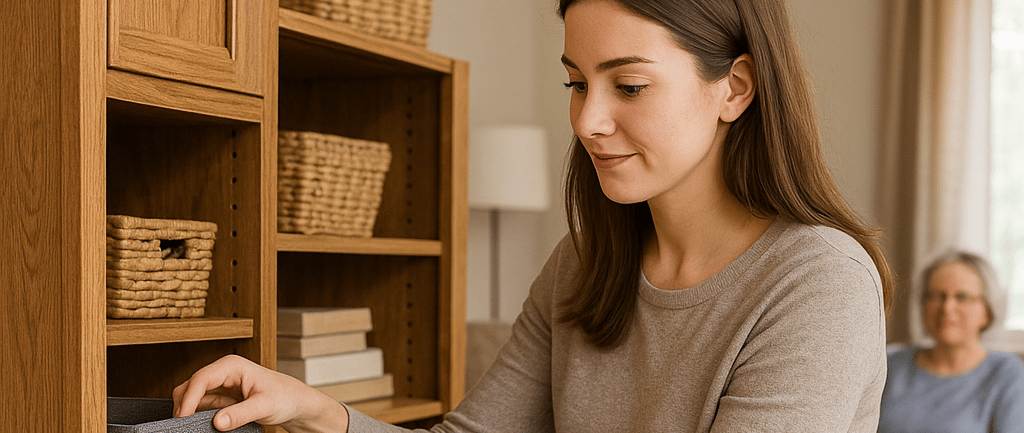The ParentProof Starter Guide: 10 Simple Upgrades for Safer Living at Home
Aging at home doesn’t have to feel complicated or expensive. This starter guide walks you through ten simple upgrades - most under an hour and many under $50 - that make your parents' home safer, easier to navigate, and better suited for the way they live today. These are practical changes that prevent falls, reduce daily frustrations, and give everyone a little more peace of mind.
SAFETY TIPS
11/14/20252 min read


Safe, simple, supportive.
What we’ll upgrade
Motion‑sensing night lights
Non‑slip floor & bedside mats
Smart plugs / timer‑controlled lamps
Low‑threshold transitions
Elevated toilet seat or rails
Clear‑view storage & labels
Smart switches or motion switches
Declutter high‑traffic zones
Bedside essentials station
Simple fall‑detection or activity alerts
1) Motion‑Sensing Night Lights
Why it matters: Most nighttime falls happen on the trip from bed to bathroom. A gentle light that turns on for them is a quiet lifesaver.
Install tip: Place one near the bed, in the hallway, and in the bathroom. Choose warm white for sleepy eyes.
Try: Motion‑sensor night lights (various)
Pro tip: Look for dusk‑to‑dawn or motion settings so they only turn on when needed.
2) Non‑Slip Floor & Bedside Mats
Why it matters: Getting out of bed or stepping onto slick tile is a common slip point. A cushioned, beveled mat reduces risk.
Install tip: Place by the bed and in front of the sink/shower. Beveled edges help walkers and wheelchairs glide.
Try: Bedside fall mats | Non‑slip bath mats
3) Smart Plugs or Timer‑Controlled Lamps
Why it matters: Automate lights so your parents aren’t fishing for switches in the dark.
Install tip: Use smart plugs for lamps on a schedule or voice command. Keep it simple.
Try: Simple smart plugs
4) Low‑Threshold Transitions
Why it matters: Thick thresholds and rug edges are sneaky trip hazards. Smoother transitions cut risk.
Install tip: Replace tall thresholds; tape down rug corners; use low‑profile transition strips.
Try: Low‑profile transition strips
5) Elevated Toilet Seat or Support Rails
Why it matters: Standing from a low seat is tough and risky. A raised seat or rails can be a game changer.
Install tip: Check height and weight limits; choose rust‑resistant hardware.
Try: Elevated toilet seats | Toilet safety rails
6) Clear‑View Storage & Labels
Why it matters: Clear bins + labels = less bending, digging, and frustration.
Install tip: Keep daily‑use items at waist‑to‑chest height. Label shelves by category (“meds,” “glasses,” “remotes”).
7) Smart Lighting Switches or Motion Switches
Why it matters: If reaching a switch is hard or easy to forget, motion‑activated lighting is a quiet assist.
Install tip: Use in hallways, bathrooms, and closets. Adjust sensitivity to avoid false triggers.
Try: Motion sensor light switches
8) Declutter High‑Traffic Zones
Why it matters: Cords and side tables in walkways are trip magnets. Clear paths mean safer steps.
Install tip: Aim for 36" pathways; tidy cords; remove wobble‑prone furniture.
9) Bedside Essentials Station
Why it matters: Glasses, water, phone, remote—keep everything within easy reach to avoid risky night moves.
Install tip: Add a small caddy + USB charger; use a soft night light nearby.
Try: Bedside caddies | USB charging stations
10) Simple Fall‑Detection or Activity Alerts
Why it matters: If you live far away (or just worry like a normal person), a privacy‑respecting sensor provides peace of mind.
Install tip: Start with non‑camera motion sensors or door sensors; test alerts on your phone first.
